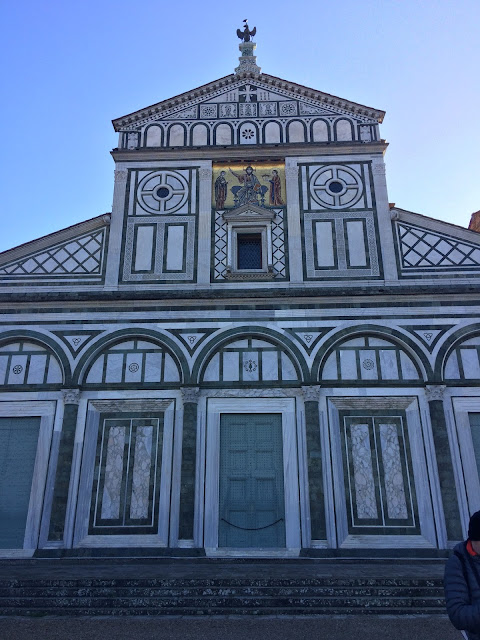What's in a name? Florence, by any other name, would still be as beautiful.
The origin of Florence's name is not entirely settled. Over its long history, Florence has had several different names.
Pre-Roman Florence, Unknown Name:
Although soldiers from Rome established a Roman town here in 59 B.C., the area already had a long history of human activity. The Etruscans were here, although their main settlement was 5 miles away in the hills. Before the Etruscans, there were Iron Age and Bronze Age peoples and others before them. It is unknown what any of the pre-Roman inhabitants called the area.
Roman Florence, Fluentia:
A popular version of the naming of Florence starts with the arrival of retired Roman soldiers around 59 B.C. Roman generals and other soldiers, for their faithful service to Rome, were granted lands in Tuscany near Fiesole. Living in a hill town like Fiesole makes defensive sense but it makes daily living much harder. So, the Roman soldiers who had conquered much of Europe believed they were secure and settled instead in the river valley below Fiesole.
In the valley, the land was conducive to farming because it was flat and rich due to periodic flooding of nearby rivers. Two of the rivers, the Arno and the Mugnone, joined in the valley. Their confluence gave the new Roman settlement its name, Fluentia. The location was also selected because the nearby rivers made the area easier to defend (what army wants to attack across a river?).
Once settlement of the area had commenced, Julius Caesar in 59 B.C. ordered the construction of a "modern" Roman town for his former generals. Of course, perhaps the generals were sent to Tuscany and given a town for another reason. The town is more than 150 miles from Rome. Perhaps, the generals were sent away to a pleasant Tuscan town with all sorts of diversions so they would not get restless and stir up trouble if still living in Rome. With baths, a theater and amphitheater, plus abundant supplies of Tuscan food and wine, the inhabitants of Fluentia were clean, entertained and well fed.
There are various stories about the town's name changing from Fluentia to Florentia.
One scholar explains: The name Fluentia stuck for a while. Over time, the town grew. The town's name became Florentia "perhaps just through the ordinary process by which words are corrupted, or perhaps because of the wonderfully successful flowering of the city, Fluentia became Florentia." (Leonardo Bruni, History of the Florentine People.) Another scholar similarly notes that the prosperous town was called Colonia Florentina - the flourishing colony.
One scholar explains: The name Fluentia stuck for a while. Over time, the town grew. The town's name became Florentia "perhaps just through the ordinary process by which words are corrupted, or perhaps because of the wonderfully successful flowering of the city, Fluentia became Florentia." (Leonardo Bruni, History of the Florentine People.) Another scholar similarly notes that the prosperous town was called Colonia Florentina - the flourishing colony.
Another story tells us the town was named Florentia because its "was founded in spring, during the Ludi Florales, in honor of the goddess Flora".
Still another story tells us that the town was called Florentia "because of the abundance of blooming lilies in the area". (The symbol of Florence has long been the lily, still very prominent in the life of the town.)
Another idea is that the name Florentia comes the "lush grassy planes, known as florentes" around the town.
Finally, the town's name might derive from the Etruscan phrase "Florence Birent", meaning "land between the waters". The waters in question are the rivers Mugnone and Affrico where join they the Arno.
Still another story tells us that the town was called Florentia "because of the abundance of blooming lilies in the area". (The symbol of Florence has long been the lily, still very prominent in the life of the town.)
Another idea is that the name Florentia comes the "lush grassy planes, known as florentes" around the town.
Finally, the town's name might derive from the Etruscan phrase "Florence Birent", meaning "land between the waters". The waters in question are the rivers Mugnone and Affrico where join they the Arno.
From Florentia to Firenze:
Over the centuries, the name Florentia evolved with the decline of Latin and the rise of medieval Italian vernacular, the Florentine dialect and then modern Italian:
Florentia became Fiorentia, then Fiorenze, then finally Firenze in modern Italian.
We like the story that Florence is named for the lilies flowering in the area. Whichever story is correct, we think Florence is a beautiful place to live.






























